Abandoned unsinkable aircraft carrier. Simushir, Broughton Bay (27 photos)
Curved in the shape of the letter “C”, Broughton Bay is the water-filled caldera of the Uratman volcano. The bay is large: 2.5 by 5.5 km, with depths up to 250 m, and the height of the caldera walls reaches 700 m - an ideal shelter! 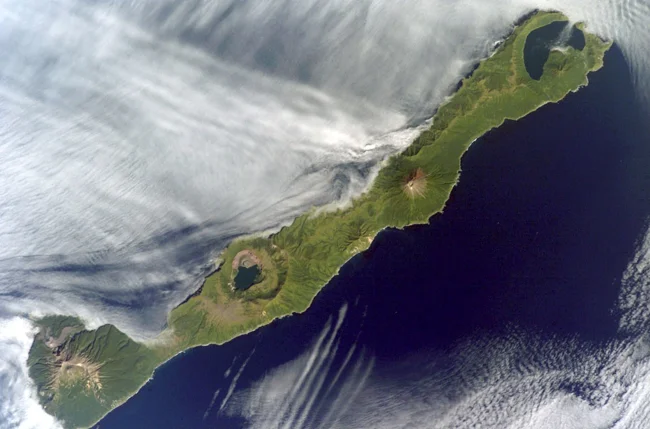
Simushir Island belongs to the middle group of the Kuril Islands. Long and narrow, like the larva of a swimming beetle, it stretches from northeast to southwest for 59 km. The “little head” located in the north closed its claws almost completely, forming Broughton Bay. 
Broughton Bay.
Curved in the shape of the letter “C”, Broughton Bay is the water-filled caldera of the Uratman volcano. The bay is large: 2.5 by 5.5 km, with depths up to 250 m, and the height of the caldera walls reaches 700 m - an ideal shelter! 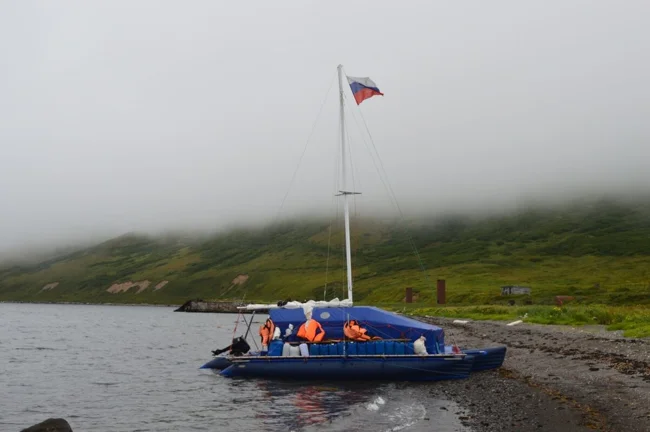
Broughton Bay is densely shrouded in fog. We never saw Uratman Volcano))
Until 1875, the Ainu lived on the island. During World War II, there was a Japanese military garrison in the bay. 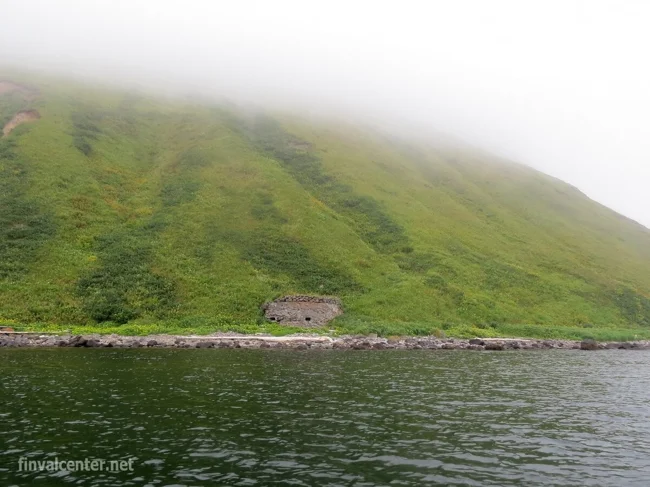
Japanese bunker at the entrance to Broughton Bay (East Claw Peninsula).
After 1946, three Soviet border outposts were located on Simushir, and in the 70s of the twentieth century it was decided to build one of the largest naval bases in the Far East here. 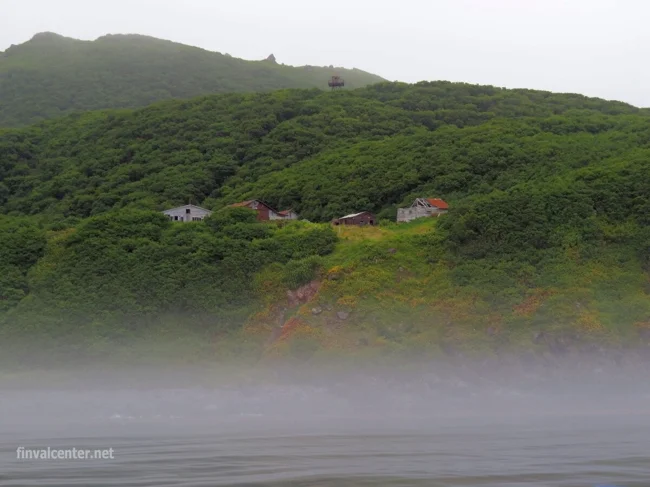
Border outpost in the south of Simushir Island, in Whaling Bay.
Initially, the depth of the entrance to the bay was only six meters. For the movement of large-capacity vessels, the entrance needed to be deepened and widened. 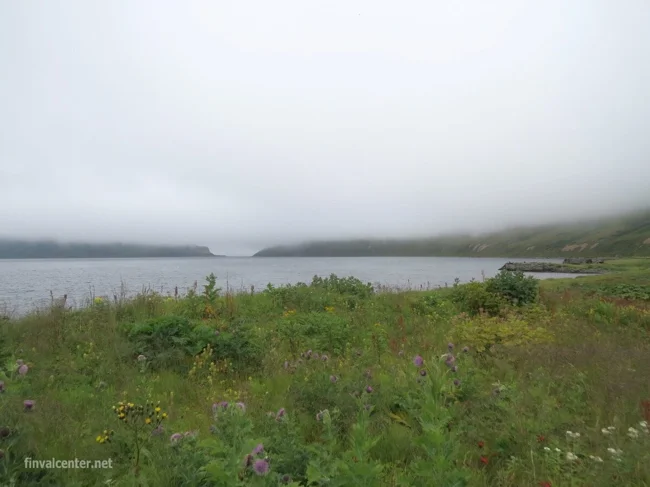
This is what the entrance to the bay looks like now.
In 1978, demolition workers and a construction battalion arrived on the island. The amount of work was colossal - about a kiloton of explosives (calculated as TNT) were required to explode the rock. Ammunition was brought from all over the region: from air bombs to mines left over from the First World War. 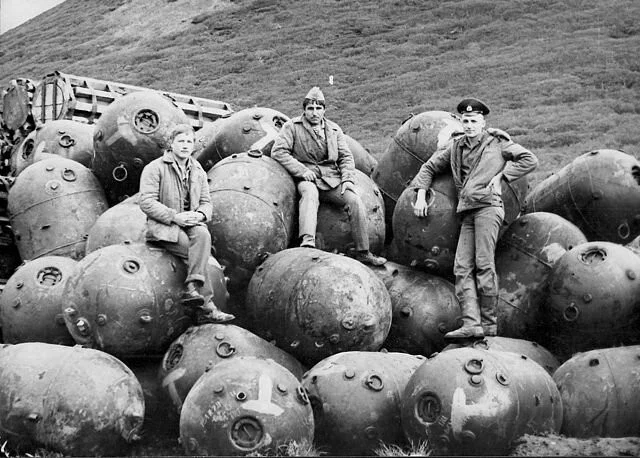
Before blasting work in Broughton Bay. .Far left - photo author - Sergey Nogovitsyn
In June 1980, a grand explosion took place. They say that after it there was black rain over Simushir for two days. 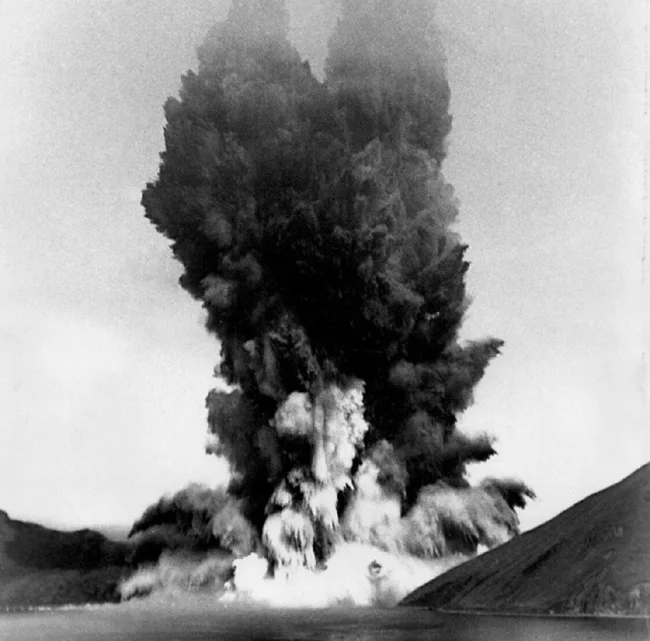
Blasting work to widen the entrance to Broughton Bay. Photo: Sergey Nogovitsyn.
After dredging the shores of Broughton Bay, intensive work began on the construction of a military cantonment and the roots of floating piers. 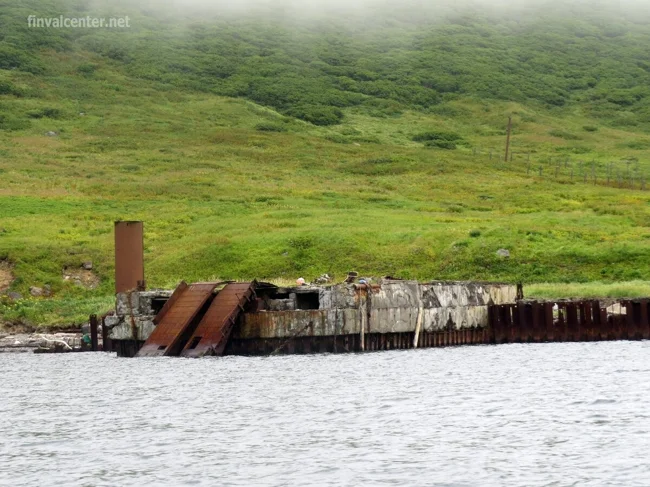
Flavpiers root. 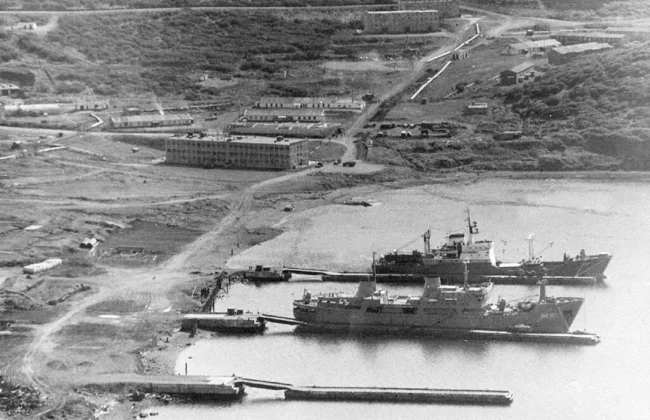
The first one in the photo is the energy ship ENS-357, which provided the entire village with electricity for several years (until a coastal power station was built). The second is MST "Irbit". Photo from 1987-1988. 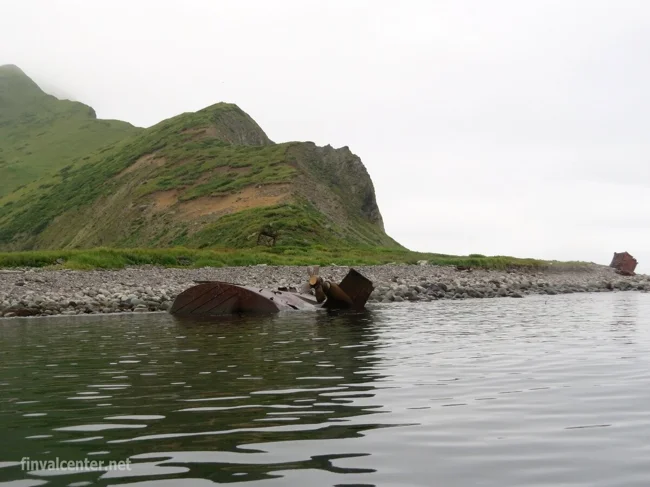
Cape Sovetsky is the entrance cape to Broughton Bay. Parts of the bulk carrier "POSIET". The ship was standing near the entrance to the bay. During a strong storm, she was torn from her anchors and thrown aground near the cape. (this happened in 1979). 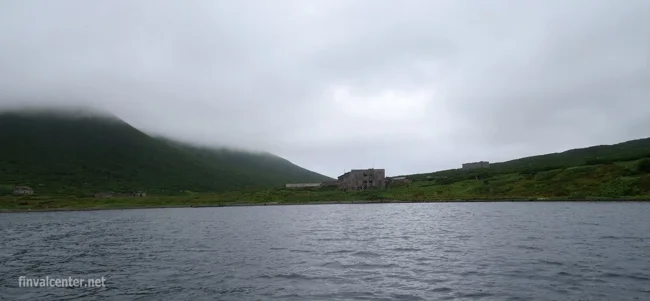
Kraterny village
In the military town, called "Kraterny", two-three-story residential buildings, a kindergarten, a power plant, a boiler room, a store, workshops, garages, fuel and lubricant warehouses and a water intake appeared. It carried out strategic tasks: it supplied 15 tons of water per hour to any of the three piers and at the same time supplied houses and a boiler room. The water intake is located on a high coastal terrace - the water flows down under pressure, and still does! 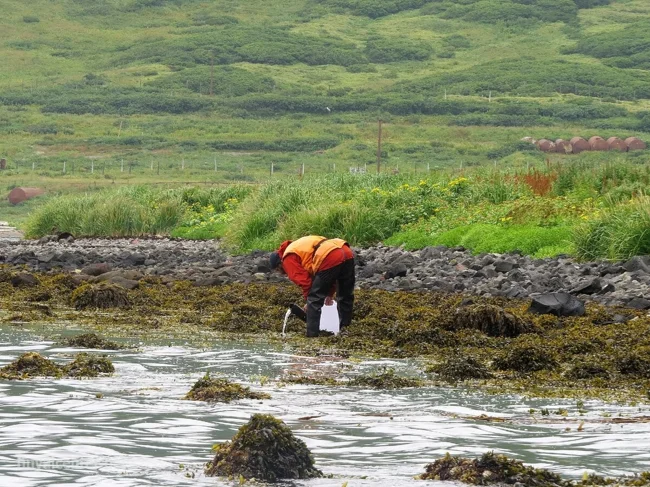
Fresh water still flows from a pipe near the shore. Its quality is very good and we have replenished our stocks. 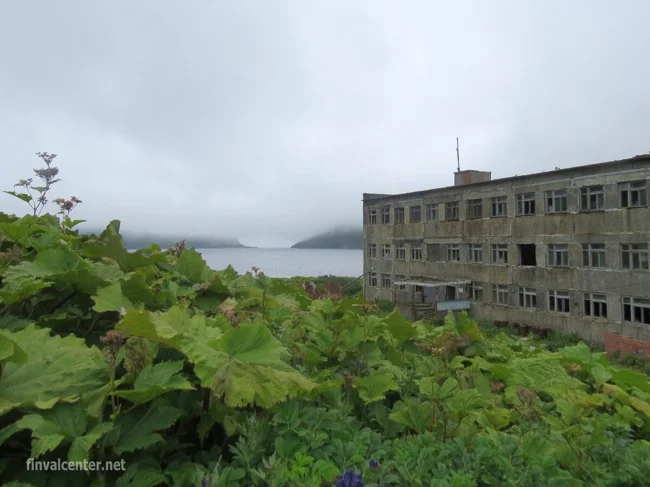
Complex building with bay views
The central building was a three-story reinforced concrete building that housed the headquarters, club, infirmary, dining room and kitchen. 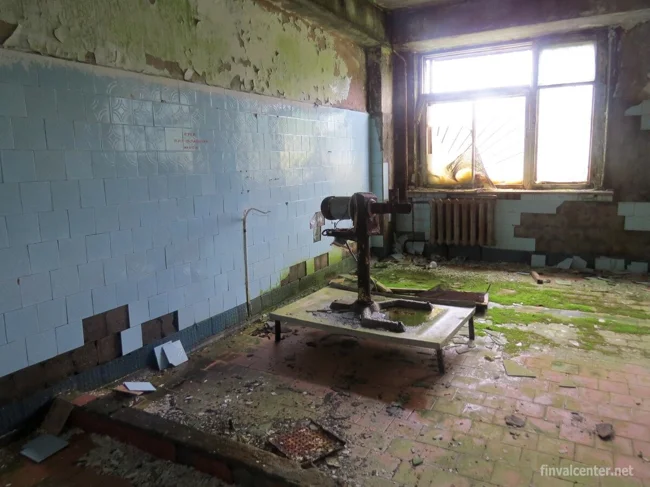
Kitchen or, in nautical language, galley)) 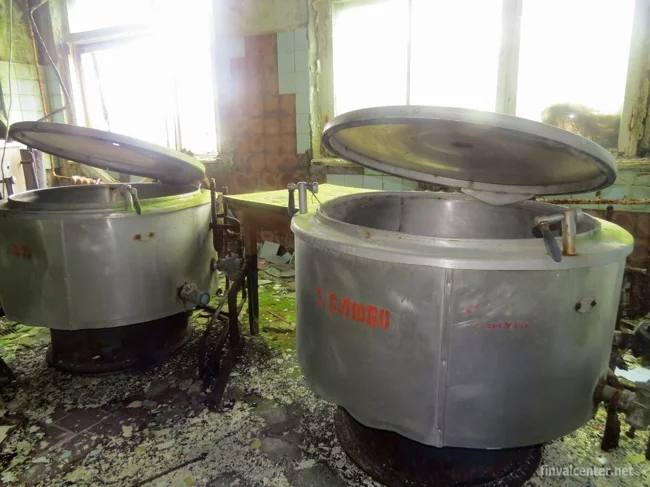
Kitchen. 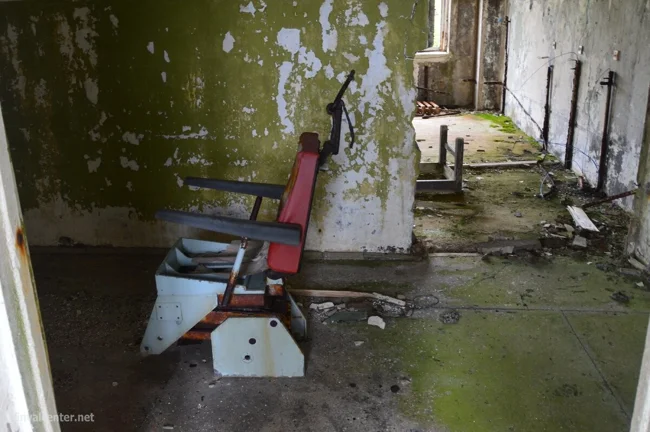
Dental chair. 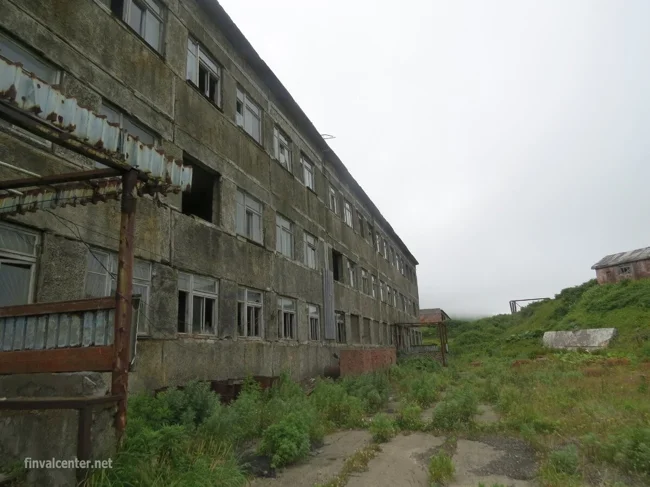
Complex building: headquarters of the 137th water district protection brigade, club, infirmary, dining room and kitchen. 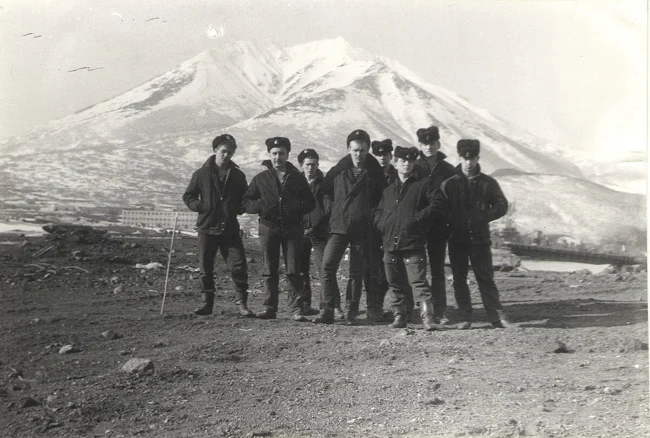
Naval aviation against the backdrop of the village and Uratman volcano)). Photo: Nikolay Voronkov
Since 1983, an air defense company with the “Defense” radar was deployed near the village. 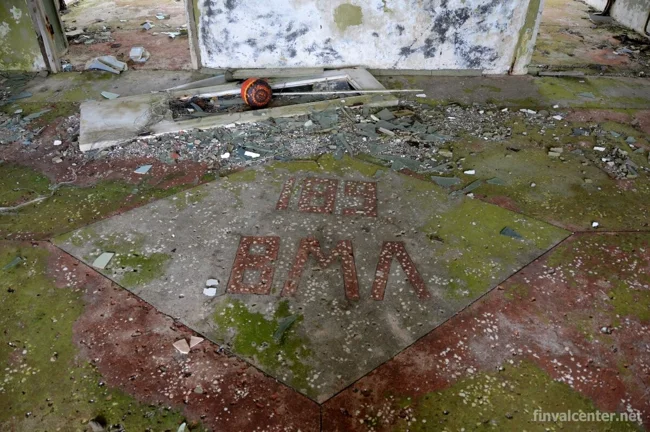
189 VML - Naval Hospital,
In 1986, on a hill, three kilometers from Kraternoye, a helipad and caponiers were built. The military unit of naval aviation (Mi-14 helicopters) began to operate. In addition to the air defense company and naval aviation, there were four Redut coastal anti-ship systems on the shore of the bay. 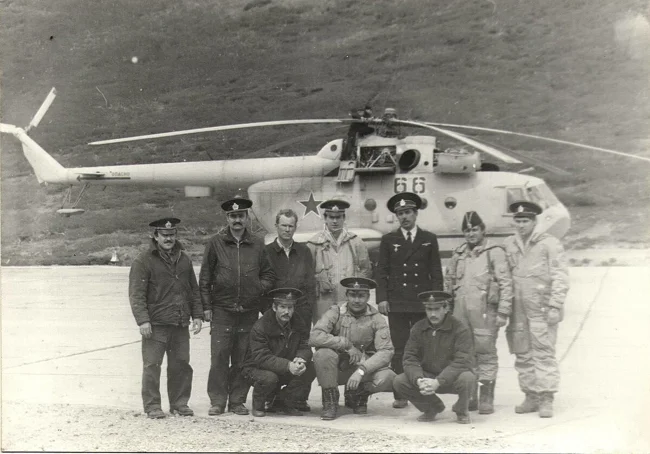
On the helipad. Photo: Nikolay Voronkov
From that moment on, the residents of the village began to call Craterny the “Unsinkable Aircraft Carrier”). 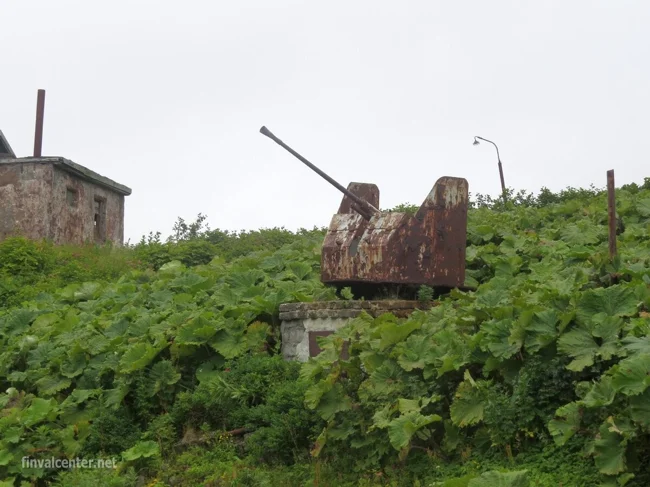
Monument in front of the headquarters
By the 90s of the last century, the total population of the village reached 900 people. 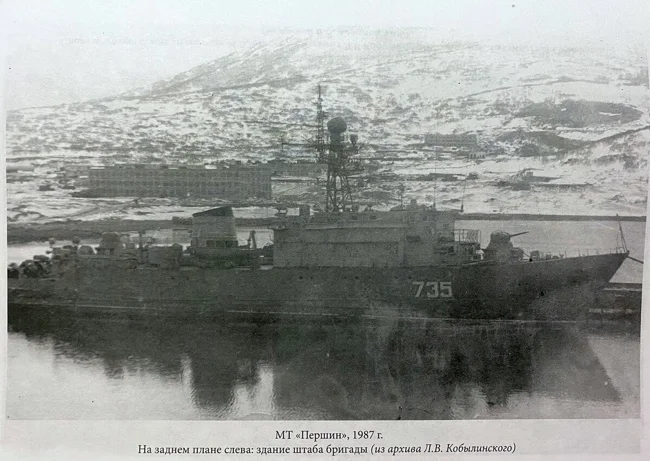
Photo from the book: L.V. Kobylinsky "Simushir History of the Pacific Fleet Ship Brigade".
It is clear that such a powerful naval base in a strategically important area did not please many of our sworn friends. During negotiations between Gorbachev and Reagan on disarmament issues, it became a bargaining chip. In 1994, the military left not only the village of Kraterny, but also from all of Simushir. 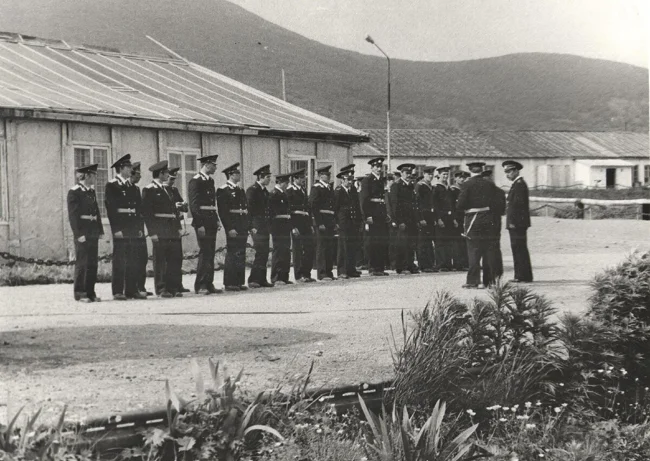
Formation near the naval aviation barracks Photo: Nikolay Voronkov.
The bulk of the valuable equipment was dismantled and taken to other military units, some was stolen, and what was left was stolen or broken by the KUK crab catchers who lived in the empty barracks and various souvenir hunters. 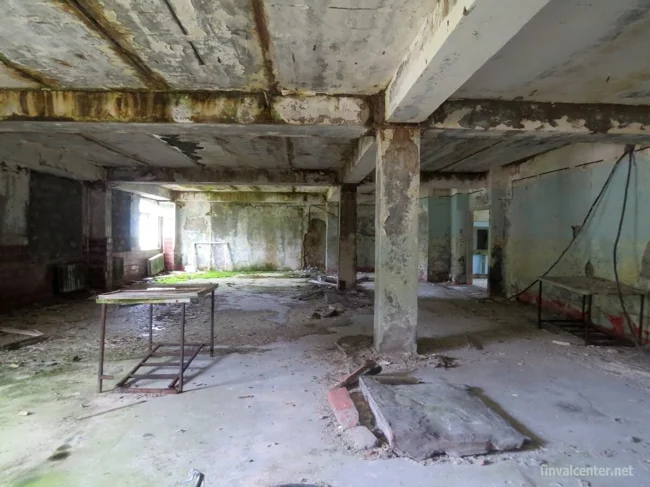
Empty hall in the main building
Now Kraterny is a ghost village. 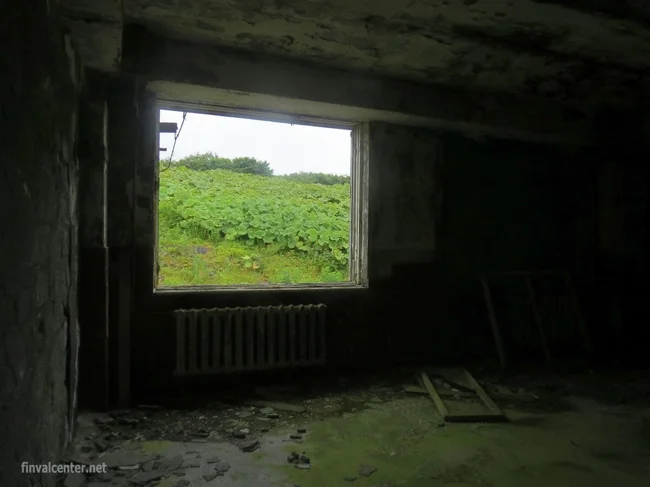
And houses with empty window sockets and rusty equipment are an illustration for the film “What will remain after... us?”
The only optimistic touch in this sad picture is nature, which is gradually hiding the apocalyptic picture. 
There is still one story about Simushir (one for now):
